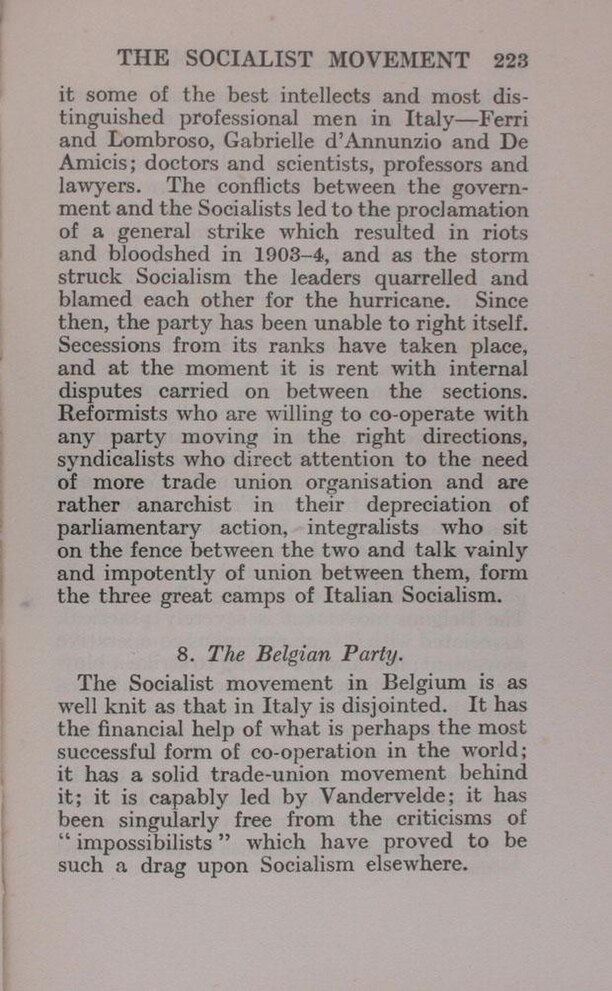it some of the best intellects and most distinguished professional men in Italy—Ferri and Lombroso, Gabrielle d'Annunzio and De Amicis; doctors and scientists, professors and lawyers. The conflicts between the government and the Socialists led to the proclamation of a general strike which resulted in riots and bloodshed in 1903–4, and as the storm struck Socialism the leaders quarrelled and blamed each other for the hurricane. Sincethen, the party has been unable to right itself. Secessions from its ranks have taken place, and at the moment it is rent with internal disputes carried on between the sections. Reformists who are willing to co-operate with any party moving in the right directions, syndicalists who direct attention to the need of more trade union organisation and are rather anarchist in their depreciation of parliamentary action, integralists who sit on the fence between the two and talk vainly and impotently of union between them, form the three great camps of Italian Socialism.
8. The Belgian Party.
The Socialist movement in Belgium is as well knit as that in Italy is disjointed. It has the financial help of what is perhaps the most successful form of co-operation in the world; it has a solid trade-union movement behind it; it is capably led by Vandervelde; it has been singularly free from the criticisms of "impossibilists" which have proved to be such a drag upon Socialism elsewhere.
